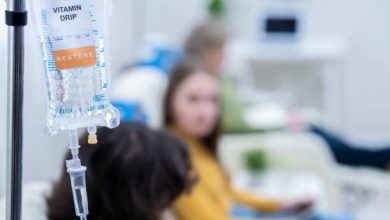Eight Things Educators Need to Know About the Brain

Last Updated on March 7, 2024 by admin
It evolved over millions of years through adaptations to changing environmental conditions. Brains have grown in complexity and size over time. Old structures were preserved, and new ones emerged. As humans evolved into social creatures, our brains became more sensitive to the social world. Old structures were conserved, and new ones emerged. This has led to a great brain that can do everything, from monitoring respiration to creating cultures. The added complexity comes at a price. These systems must be developed and interconnected and must be correctly balanced and integrated to achieve optimal performance.Teachers face a challenge from this evolutionary history. Social neuroscience findings can be helpful for teachers, but they don’t replace the need for flexibility in the classroom to accommodate all students. Teachers and students are not one-size-fits-all, and they are a collection of diverse living human beings with complicated evolutionary histories, cultural backgrounds and life stories.
We must admit that one-size-fits-all education will not work if we want to progress. These are nine scientific insights educators might be interested in.
1. The brain is a social organ.
To survive and thrive, our brains need stimulation and connection. Without inspiration and challenge, a brain will eventually shrink and die. The modern brain’s immediate environment is made up of our social relationships. Close, supportive relationships are a great way to stimulate positive emotions, learning, and neuroplasticity.
Teachers should create positive experiences for students in their classrooms. The neurobiological perspective of the teacher and the parent is very similar in terms of building the child’s brain. Positive attitudes towards students and the teacher have been proven to impact their performance positively. Social-emotional learning programs enhance learning, reduce student conflict, and foster positive social climates.
2. Two brains are possible.
The cerebral hemispheres can differentiate themselves and have developed unique skills and functions. The left hemisphere is the most skilled in language processing, linear thinking and pro-social functioning, while the right hemisphere is more adept at visual-spatial processing and strong emotions. However, many tasks require both hemispheres to contribute, and it is crucial to learn how to engage both hemispheres in the classroom.
Good teachers intuitively grasp this in their students. They will seek to balance the expression of emotion and cognition, encouraging overly rational students to be aware of and explore their feelings while helping anxious students develop the cognitive capabilities of their left hemispheres to regulate their emotions. Storytelling can help here, as stories can serve as powerful organising tools for neural network integration. Well-told stories with conflict resolutions and feelings will connect people and shape their brains.
3. It is essential to start learning early.
Our earliest years of life are when our primitive neural networks control much of our emotional and interpersonal learning. Three of the most critical areas of education are attachment, emotional regulation and self-esteem. These three areas of learning are crucial to our ability to communicate with others, manage stress and feel valued.
Teachers have the chance to explore their inner world when children act in ways they don’t understand. Children can reintegrate their neural networks of cognition, affect, and bodily awareness when they can name and consciously think about painful experiences.
Please encourage students to keep journals and diaries of their experiences. This allows them to be the masters and reduces stress and anxiety. Studies have shown that writing about your experience can improve well-being, emotional regulation and reduce stress.
4. Conscious awareness and unconscious processes co-occur at different speeds.
Every millisecond, the vast amount of neural processing is not limited to conscious awareness and explicit memories.
You can do so many things without even thinking about them. Walking, breathing, balance, and even building sentences are all automatic. The brain can process information and analyse it using a lifetime’s experience to present it to us in seconds. The brain creates an illusion that the current situation is actual and can interpret it based on a lifetime of experience, and it then gives the information to us in a fraction of a second.
This is especially true for prejudice. Fear conditioning doesn’t require conscious awareness. Therefore, our brain’s instinctive reaction to people of other races is not related to our conscious attitudes. Open discussion and more interracial exposure can help to prevent prejudice from being made into negative beliefs and behaviours.
5. The mind, brain, and body are interconnected.
The brain’s ability to function at its best is stimulated by physical activity. Exercise has been shown in studies to stimulate the growth of neurons in the hippocampus. It pumps more oxygen into the brain, stimulating frontal-lobe plasticity and capillary growth.
Learning requires proper nutrition and sleep. The brain weighs only about a third of our bodies, using approximately 20% of our energy. This makes healthy food an essential component of learning. While sleep enhances cognitive performance and education, sleep deprivation can reduce our ability to maintain vigilance or attention. It has been proven that sleep deprivation can also affect flexibility and decision-making.
These biological realities can be used to change school start times, lunch programs, recess, and recess hours. Teachers can help students understand the importance of sleep and offer suggestions on promoting relaxation and creating a positive sleep environment. It is possible to incorporate healthy eating habits and regular exercise in schools. Students will benefit from scientific knowledge about how the brain and body interconnect and how learning works. This could help them improve their academic performance and physical health.
Learning can also be enhanced or hampered by certain environmental conditions. Poor school facilities, inadequate classroom lighting, outside noise, and inadequacies contribute to poor academic performance. Insufficient support in chairs can reduce blood flow to the brain, leading to cognitive problems. Temperatures above 74-77 degrees Fahrenheit are associated with lower maths scores and comprehension. Learning can be improved by creating a more welcoming environment that meets the body’s physical needs.
6. For deeper learning to occur, the brain needs repetition and multichannel processing.
Survival is influenced by curiosity, the desire to discover and seek out new things. Dopamine and opioids, which stimulate the brain’s feel-good chemicals, reward curiosity. Our brains are wired to be alert to changes in the environment and learn best when we have short breaks. Teachers should reestablish student attention every 5-10 minutes and shift their focus to new topics.
Learning involves strengthening the connections between neurons. Neuroscientists say that repetition is a way to support education. However, exposure and lack of repetition can lead to its decline. To deepen learning, teachers would be wise to ensure that they reiterate important points during lessons.
Multichannel learning engages each of the networks’ memory systems. This is because visual, semantic and sensory neural networks all have their memory systems. Our visual memory is fantastic and written or spoken information combined with visual information leads to better recall. Learning will be more generalised if organised across all sensory, emotional, and cognitive networks.
7. Learning is affected by stress and fear.
Our brains have been shaped by evolution to be cautious and to feel fear when it is even remotely useful. Fear can make us less intelligent as amygdala activation interferes with prefrontal functioning, part of the fear response. Anxiety can also stop us from exploring, make our thinking more rigid and drive “neophobia,” which is the fear of new things. Chronic stress can cause problems with our ability to learn and even affect our physical health.
Students’ ability and willingness to reduce stress are critical factors in their success at school. Incorporating stress-management techniques into the education curriculum is a straightforward application of neuroscience to education. This can improve learning, emotional well-being, and physical health. Teachers can increase neuroplasticity and learning by using their positive outlook, empathy, and warmth.
8. We analyze others, but not ourselves: projection is the supreme power
Our brains are wired to notice the emotions and behaviours of others. This processing is complex and fast, and it shapes our perception of other people milliseconds before they even become conscious of them. Our minds automatically create a theory about the thoughts of others, forming our ideas about their motivations, intentions, and next steps. We are quick to believe we know other people but slow to recognize our motives and flaws.
It is possible to learn more about yourself and improve your empathy by taking our thoughts about other people and trying them out for size. Students can use simple exercises to help them see what and how they feel about other people, which will open up a door to self-awareness and empathy. To help students gain an objective view of their motivations, strengths and weaknesses, teachers can ask them to study the lives of historical characters and movie characters.
Read More: What is Education and its history?




